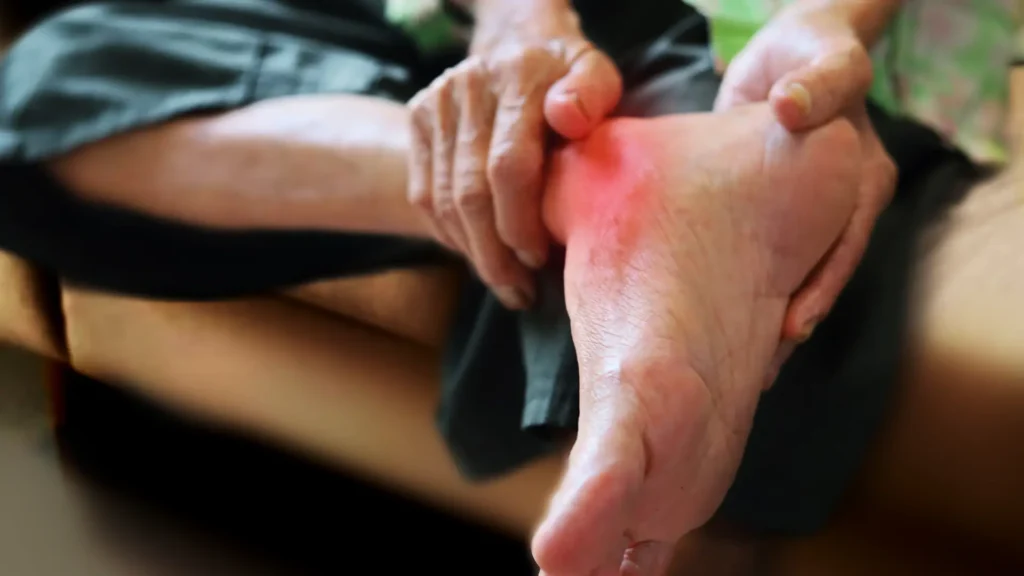Arthritis is a common condition that affects millions of people worldwide. It’s known for causing joint pain, stiffness, and reduced mobility. Arthritis refers to over 100 different types of joint inflammation and diseases. Therefore, understanding arthritis and its implications is crucial for better management and improving quality of life.
In the blog below, we will explore what arthritis is, and its most common: types, causes, symptoms and methods of trying to manage it effectively.

What is arthritis?
Arthritis is characterised by inflammation of the joints, which can lead to pain and stiffness. It can affect people of all ages, genders and backgrounds, although it’s more common in older adults. Arthritis is used as an umbrella term as there are over 100 different types. The most common two are Osteoarthritis and Rheumatoid arthritis.
Osteoarthritis—Also often referred to as “Wear and tear,” osteoarthritis occurs when the protective cartilage on the ends of bones wears down over time. It is commonly seen in weight-bearing joints like the hips, knees, and spine.
Rheumatoid arthritis – This is an autoimmune condition where the immune system mistakenly attacks the joints which leads to inflammation and damage to the joint lining. This is most commonly seen in the smaller joints such as those in the hands and the feet.
What are the causes of arthritis?
The causes of arthritis can vary depending on the type, however, the most common causes of arthritis are:
Age – The risk of arthritis tends to increase with age, expressly osteoarthritis
Gender – Women are more likely to develop rheumatoid arthritis, while osteoarthritis can affect both men and women equally.
Genetics – If there is a family history of arthritis it can increase the likelihood of developing the condition.
Injury – Joint injuries can sometimes lead to the development of osteoarthritis later in life.
Obesity – Excessive weight puts extra pressure on the joints. This particularly affects the knee, hips and spine.
Occupational factors – If your work involves repetitive movements that put stress on the joints.

What symptoms could someone with arthritis have?
Arthritis symptoms can develop gradually or suddenly, and they often get worse with time! The most common symptoms are:
Joint pain – Normally a persistent and tenderness aching in the joints
Stiffness – Commonly worse in the morning or after long periods of inactivity but slowly eases when moving
Swelling – Inflammation around the joint causing it to appear swollen and red.
Reduced range of movement – Loss of flexibility of the joints, making some daily activities harder to perform.

What are some of the possible treatments for arthritis?
While arthritis cannot be reversed, managing it can significantly improve the quality of life. Some of the common key strategies include:
Chiropractor – Chiropractic care can aid in helping some arthritis, as they could provide relief by reducing the pain, improving mobility and enhancing joint function.
Weight management – Maintaining a healthy weight will reduce stress on weight-bearing joints
Assistive Devices – Devices such as Braces and walkers can help to reduce the stress placed on the joints.

Lifestyle Changes to Manage Arthritis
Beyond the medical treatments, several lifestyle changes can help manage some of the arthritis symptoms and improve your overall well-being. Below are a few ways of doing so:
Diet – A balanced diet that is rich in anti-inflammatory foods like fruit, vegetables and omega 3- rich (such as salmon) can help to reduce inflation of the joints.
Using Hot and Cold therapy – Using heat to relax the surrounding muscles and to reduce the pain, or using cold (Ice packs) to reduce the swelling and numb the pain.
Staying active – Regularly engaging in physical activity is important for maintaining joint health, mobility and strength of the surrounding muscles.
Conclusion
If you are living with arthritis it can be challenging but understanding the condition and adopting a proactive approach to management can greatly improve the symptoms.
If you suspect that you are suffering from arthritis or struggling to manage the symptoms it’s important to consult a healthcare professional to get a tailored treatment plan because the earlier the intervention the greater the effect of management and prevention of further joint damage.
Stay informed, Stay active, and Take control of your health!


